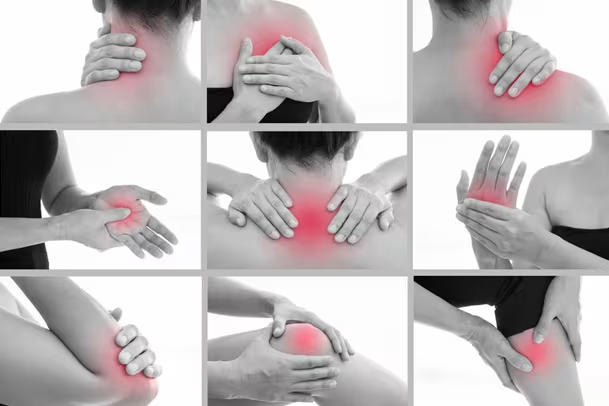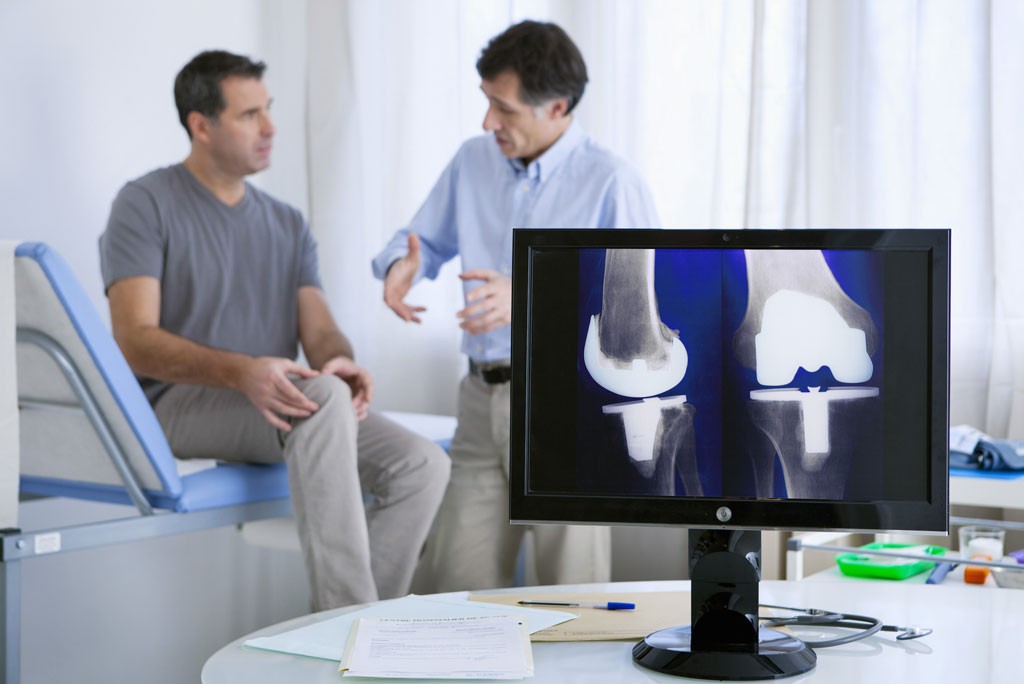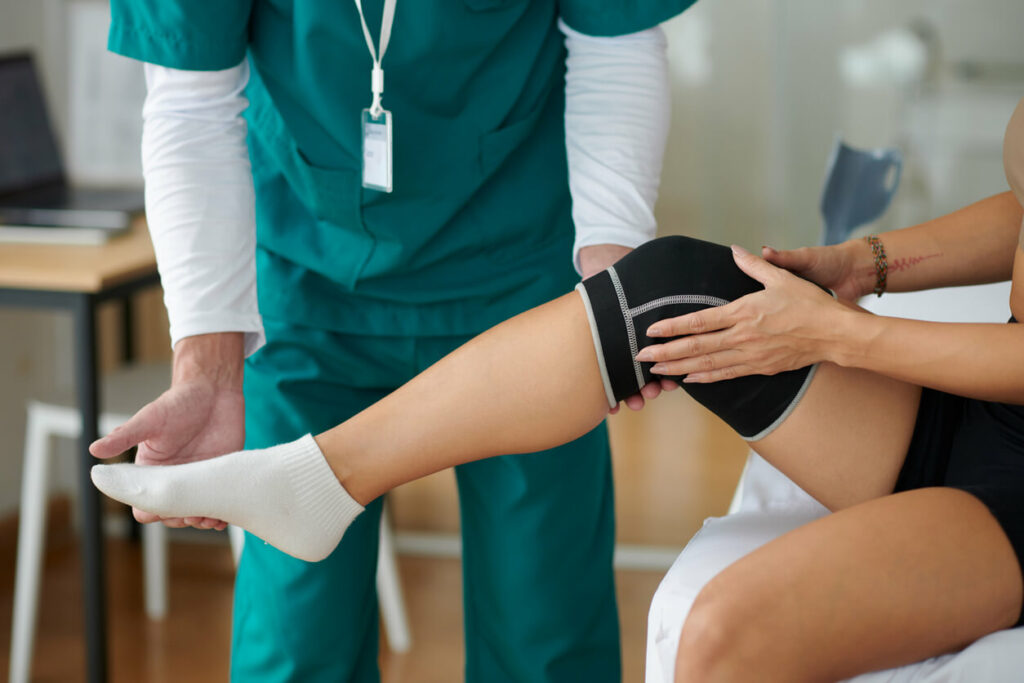In today’s fast-paced world, many of us push our bodies to the limit without allowing adequate time for recovery.
We work longer hours and exercise more intensely, which can place significant strain on our musculoskeletal system.
This comprehensive guide will walk you through everything you need to know about orthopaedic care in Singapore, from understanding what orthopaedic surgeons do to knowing when you should seek professional help.
What is an Orthopaedic Surgeon?
Orthopaedic surgeons are licensed medical professionals who specialize in the diagnosis, treatment, and rehabilitation of musculoskeletal conditions and injuries.
Their expertise extends to both surgical and non-surgical treatments for patients of all ages.
In essence, orthopaedic surgeons care for bones, joints, and the spine, including related conditions such as nerve compressions resulting in numbness or weakness, ligament tears or ruptures, meniscus tears, muscle tears, and joint dislocations.
After a thorough assessment of a patient’s condition, an orthopaedic surgeon may recommend surgery or non-surgical treatment options, which might include prescribing mechanical devices or apparatus to aid in recovery.
Read more: Which Orthopedic Doctor in Singapore Should You Consider?
Orthopaedic Sub-Specialties
The field of orthopaedics has evolved to include several sub-specialties, allowing surgeons to focus their expertise on specific areas of the musculoskeletal system.
The main sub-specialties include Adult Reconstruction (AR) Service which specializes in procedures such as hip and knee replacement surgeries.
Sports Service which focuses on treating injuries commonly sustained during sports activities, and Spine Service that deals with conditions affecting the spine and related structures.
Additional specialties encompass Foot and Ankle Service specializing in issues affecting the foot and ankle regions, Musculoskeletal Tumors Service which manages tumors affecting bones and soft tissues, Orthopaedic Trauma Service that treats fractures and other traumatic injuries, Hand Surgery Service focusing on conditions affecting the hand and wrist, and Paediatric Service which specializes in treating orthopaedic conditions in children.
Related article: Best Orthopedic Doctor in JB for Singaporeans
Educational Requirements and Training
The journey to becoming an orthopaedic surgeon in Singapore is rigorous and lengthy, requiring:
- Completion of 5 years of medical school as an undergraduate
- 6 years of Orthopaedic specialist training
- The first year typically covers general surgery
- The remaining years are devoted to orthopaedic-specific training
Many orthopaedic surgeons choose to further specialize in one of the sub-specialties mentioned above, which requires an additional 6 months to 1 year of fellowship training after their residency.
During their training years, surgeons rotate through all sub-specialties to ensure proficiency in managing a wide range of orthopaedic problems.
Read more: Total Knee Replacement Surgery in Singapore
Orthopaedic Surgeon vs. Chiropractor: Understanding the Difference
It’s important to distinguish between orthopaedic surgeons and chiropractors, as they represent different approaches to musculoskeletal care:
| Orthopaedic Surgeon | Chiropractor |
|---|---|
| Medical doctor with specialist qualification | NOT a medical doctor |
| Can prescribe medications | Cannot prescribe medications |
| Uses modern scientific technologies (X-rays, MRI) for diagnosis | Typically provides manual therapy, including spinal manipulation |
| Offers both surgical and non-surgical treatments | Focuses on hands-on and alternative treatments instead of surgery |
| Makes recommendations based on medical evidence | Based on the belief that the body can heal itself |
| Treats a wide range of musculoskeletal conditions | More similar to traditional “sinseh” or traditional healer approach |
A common misconception is that orthopaedic surgeons always recommend surgery. In reality, they often suggest surgery only when non-surgical options have been exhausted or when a condition is too severe for non-surgical treatments to be effective.
You might like: Neck Pain in Singapore: Causes, Treatments, Prevention
Common Orthopaedic Conditions
Orthopaedic surgeons treat a wide variety of conditions affecting different parts of the body. The most common areas treated include:
- Neck: Degenerative conditions, strains, and injuries
- Back: Acute and chronic pain, disc problems, spinal stenosis
- Shoulder: Rotator cuff tears, frozen shoulder, dislocations
- Hand: Carpal tunnel syndrome, tendonitis, fractures
- Limbs: Fractures, tendon/ligament injuries, arthritis
- Head: Certain types of trauma affecting the skull
- Tummy: Some conditions related to abdominal musculature
Orthopaedic Trends in Singapore
Several notable trends have emerged in orthopaedic care in Singapore:
- Increasing prevalence of degenerative neck and back problems, likely due to sedentary lifestyles and poor ergonomics
- Majority of patients are above 50 years old, reflecting the aging population and age-related degenerative conditions
- Growing use of smart devices in treatment, even for younger patients, indicating a shift toward technology-integrated care approaches
You might be interested: Shoulder Pain in Singapore: Causes, Treatments, Recovery
When to Visit an Orthopaedic Surgeon
You should consider consulting an orthopaedic surgeon if you are around 60 years old, as age-related bone and joint issues become more common, have gone through menopause or had an oophorectomy surgery due to increased risk of osteoporosis, or take medications such as cortisone, anticoagulants, or epilepsy medications which may affect bone density.
Other reasons include having experienced a fall or trauma, having twisted your ankle or suffered other joint injuries, having been involved in sporting or other types of accidents, or experiencing severe coughing that causes musculoskeletal pain.
Read more: Knee Pain in Singapore: Causes, Treatment & Prevention
Warning Signs of Orthopaedic Conditions
The following symptoms may indicate an orthopaedic issue that requires professional attention: swelling in joints or limbs, tenderness when touching affected areas, bleeding around a joint or bone, major bruising following an injury, and inability to move a body part without experiencing pain.
Additional warning signs include bone visibly sticking out at an abnormal angle, numbness in limbs or extremities, pins and needles sensation which may indicate injured nerves, inability to lift or rotate an injured body part, and inability to put weight on your legs.
Serious symptoms also encompass severe pain when breathing which may indicate broken ribs, shallow breathing following trauma, or a grinding, cracking, or snapping noise heard during an injury.
Conditions Treated by Orthopaedic Surgeons

Musculoskeletal pain is the number one reason why people visit their doctors annually.
While many people know that orthopaedic surgeons treat broken bones and replace painful joints, they also treat a wide range of other conditions, including back pain, bursitis, fibromyalgia, fibrous dysplasia, growth plate injuries, heritable disorders of connective tissue, and hip and joint replacement surgery.
Additional conditions encompass Marfan syndrome, osteogenesis imperfecta, osteonecrosis, osteoporosis, Paget’s disease of bone, shoulder problems, spinal stenosis, sports injuries, sprains and strains, and tendinitis.
Related article: Arthritis Treatment in Singapore: Causes, Risks, Symptoms
Diagnostic Tests and Treatments
Diagnostic Tests

Orthopaedic surgeons use various screening tests to diagnose conditions accurately, including arthrogram which is a specialized X-ray of a joint, bone scans to detect bone diseases and tumors, and computed tomography (CT) scan that provides detailed images of bones and surrounding tissues.
Additional diagnostic tools include discography which helps diagnose problems with spinal discs, magnetic resonance imaging (MRI) scan that produces detailed images of soft tissues and bones, and X-rays for basic imaging to identify fractures and bone abnormalities.
Treatment Options

Orthopaedic treatments range from non-surgical interventions to complex surgical procedures.
Non-surgical approaches include pain medication, physical therapy and rehabilitation, bracing or casting, and injections such as corticosteroids.
Surgical approaches encompass minimally invasive surgery with smaller incisions and faster recovery, conventional surgery involving traditional open surgical procedures, and internal fixation which involves surgically installing orthopaedic devices on the bone itself.
For more severe injuries, additional procedures may be necessary, such as bone grafting and bone/joint transplantation, bone-forming procedures, limb lengthening, lower limb joint reconstruction including hip and knee replacements, upper extremity reconstruction, and soft tissue repair.
Public vs. Private Orthopaedic Care in Singapore
When seeking orthopaedic care in Singapore, you have the option of choosing between public and private healthcare facilities:
Public Hospitals
Doctors are well-trained and meet high global standards, though they may include relatively new doctors who are still gaining experience, and many doctors receive most or all of their training in Singapore.
Public hospitals are generally more affordable than private care but may have longer waiting times for appointments and procedures.
Private Hospitals
Doctors are typically more experienced and operate on an appointment-based system that allows more time with patients, with patients generally reporting higher satisfaction with the experience.
Doctors often have received more international training, may have attended prestigious medical schools worldwide, and have better command of various languages, which can be helpful for international patients.
However, private hospitals are more expensive than public care. The choice between public and private care depends on factors such as your medical condition, where you live, whether you want to choose your own doctor, and whether you have health insurance coverage.
Cost of Orthopaedic Care in Singapore
The cost of seeing an orthopaedic surgeon in Singapore varies depending on several factors:
- Initial consultation fees typically range from $100 to $150
- Some specialists may charge up to $250 for consultations
- The cost of surgical procedures varies widely based on complexity
Here are some examples of surgery and ward costs (subsidized rates):
| Type of Treatment | Surgery Cost | Ward C Cost |
|---|---|---|
| Hip/Knee Arthroscopy | $1,500-$2,700 | $1,200-$3,200 |
| Bone and Joint injuries* | – | $400-$1,400 |
| Ankle, Joint fracture, both sides | – | $1,900-$4,800 |
*Injuries to Shoulder, Arm, Elbow, Knee, Leg, or Ankle without Complications
Common Shoulder Conditions and Treatments
Orthopaedic surgeons frequently treat a variety of shoulder conditions, including:
- Shoulder Pain: General discomfort arising from various underlying issues
- Frozen Shoulder: Characterized by stiffness and pain, typically developing gradually
- Impingement/Bone Spur: Occurs when shoulder movements cause pinching of soft tissue
- Bursitis: Inflammation of the fluid-filled sac near the joint
- Tendinitis/Tendinosis: Inflammation or degeneration of shoulder tendons
- Rotator Cuff Tear: A tear in muscles or tendons stabilizing the shoulder
- Shoulder Dislocation: Upper arm bone slips out of the socket
- SLAP Tear: A tear affecting the attachment of the biceps tendon
- Shoulder Arthritis: Degenerative changes affecting the shoulder’s articular cartilage
Exercises for Shoulder Pain
Several effective exercises can help relieve shoulder pain:
Pendulum Exercise:
Lean over, supporting your non-injured arm with a table or chair.
Let the sore arm dangle and draw circles in the air, gradually increasing the size of the circles and changing direction periodically.
Arm Across the Chest:
Hold your right hand out in front of your body near the waist.
Use your left hand to pull the right arm across your chest until you feel a stretch. Hold for 30-50 seconds and repeat 3-5 times.
Neck Release:
Sit up straight, slowly tilting your chin toward your chest until you feel the stretch in the back of your neck.
Lean your head to one side to stretch the opposite shoulder. Hold each position for about a minute while breathing deeply.
Chest Expansion:
Using an exercise band, rope, or strap behind your back, grasp with both hands and move your shoulder blades toward each other while gently lifting your chin.
Hold for 10-15 seconds while breathing deeply, repeating 3-5 times.
Common Knee Conditions and Treatments
Knee problems are among the most frequently treated orthopaedic conditions:
- Meniscus Injuries: Tears in the shock-absorbing cartilage, often occurring during sports
- Cartilage Ulcers: Areas of damaged cartilage due to wear or injury
- ACL Tear: Rupture of the anterior cruciate ligament, common in athletes
- PCL Tear: Injury to the posterior cruciate ligament
- Collateral Ligament Tears: Damage to the side ligaments of the knee
- Kneecap Dislocation: Misalignment of the kneecap from its normal position
Treatment for ACL Injuries
ACL injuries can be treated through non-surgical or surgical approaches:
Non-Surgical Treatment:
- Progressive physical therapy and rehabilitation to restore knee function
- Education on preventing instability
- Use of a hinged knee brace for support
Surgical Treatment:
- Typically recommended for combined injuries (ACL tears with other knee injuries)
- May be necessary for athletes or those with high physical demands
- Can be performed through minimally invasive techniques
Is Walking Good for Hip and Knee Pain?
Walking is generally considered a beneficial, low-impact activity that can help relieve arthritis pain, stiffness, and swelling in weight-bearing joints like the knee or hip.
It serves as an excellent transition from inactivity to more vigorous exercise, even for those with joint issues.
However, if walking causes increased pain, it’s important to consult with an orthopaedic specialist.
General Orthopaedic Conditions
Beyond specific joint issues, orthopaedic surgeons also treat general conditions affecting the musculoskeletal system:
- Tennis Elbow: A painful condition due to overuse of the forearm muscles
- Golfer’s Elbow: Inflammation of the tendons connecting the forearm to the elbow
- Neck Pain: Discomfort ranging from mild to severe due to strain or injury
- Back Pain: Acute or chronic discomfort often resulting from strain, poor posture, or underlying conditions
- Arthritis: Inflammation of joints causing pain and stiffness that may worsen with age
- General Orthopaedic Fractures: Breaks or cracks in bones requiring specialist care
The R.I.C.E. Method for Sprains and Strains
For sprains and strains, the R.I.C.E. method is typically recommended during the first 24-72 hours after injury.
This stands for Rest (avoid activities that cause pain), Ice (apply cold packs to reduce swelling), Compression (use elastic bandages to provide support), and Elevation (keep the injured area above heart level when possible).
When to Worry About Lower Back Pain
While most back pain resolves with time and conservative treatment, certain symptoms warrant immediate medical attention.
These include back pain accompanied by fever, pain following a fall or injury, pain with numbness or weakness in the legs, back pain with loss of bladder or bowel control, pain that worsens when lying down or at night, and pain that radiates down one or both legs.
Payment Options for Orthopaedic Care in Singapore
Most orthopaedic clinics in Singapore accept various payment methods including cash, credit cards, and electronic payment options (PAYNOW, PAYLAH).
For patients with insurance coverage, many clinics offer E-Filing services and Letters of Guarantee (LOG) from major insurers in Singapore.
FAQs about Orthopaedic Care in Singapore
Is my condition serious enough to visit a specialist orthopaedic surgeon?
When specific conditions become chronic and persistent, or if your pain affects your quality of life to the point where you cannot perform everyday activities normally (such as walking, standing, or wearing clothes), visiting an orthopaedic surgeon for a detailed assessment and diagnosis is recommended.
Your general practitioner may refer you to a specialist if your condition requires expertise beyond their scope.
What can I expect at my first visit with an orthopaedic surgeon?
At your first appointment, the orthopaedic surgeon will evaluate your medical history and discuss the pain or symptoms you’re experiencing.
Depending on your condition, they will likely perform some form of diagnostic imaging, such as X-rays or MRI scans, to accurately assess your condition. X-rays and CT scans help rule out bone problems, while MRI scans are excellent for examining soft tissue issues like tendons, ligaments, and cartilage.
After assessment, the surgeon will recommend a personalized treatment plan based on your specific needs.
Can I continue my sporting activities if I’m experiencing pain?
It’s generally advised to listen to your body and not push through pain barriers, especially if your pain is a direct result of sports injuries.
If your pain doesn’t subside with the R.I.C.E. method (rest, ice, compression, and elevation) and over-the-counter pain relievers, seek professional medical advice.
Continuing sporting activities while injured can place additional strain on your body and potentially worsen your condition.
How long does it take for a sprained ankle to heal?
Recovery time depends on the severity of the sprain:
- Grade one sprains (slight stretching and damage to ligaments) typically take 5 to 14 days to heal
- Grade two sprains (partial tearing of ligaments) may take 4 to 6 weeks
- Grade three sprains (complete tear of the ligament) can take 8 to 12 weeks to heal
Signs of more severe sprains include significant instability, moderate to severe pain, swelling, stiffness, and bruising.
How is knee pain treated?
Treatment for knee pain varies depending on the cause and may include:
- Rest and activity modification
- Physical therapy to strengthen supporting muscles
- Bracing or taping for support
- Anti-inflammatory medications
- Corticosteroid injections for inflammation
- Viscosupplementation (gel injections) for arthritis
- Surgical intervention for severe or persistent conditions
Your orthopaedic surgeon will recommend the most appropriate treatment based on your specific diagnosis and lifestyle needs.
When should I be worried about hip pain?
You should consult a doctor about hip pain if you experience:
- Persistent pain lasting more than a few days
- Intense pain that limits normal activities
- Swelling or sudden swelling around the joint
- Redness or warmth around the joint
- Hip pain at night or when resting
- Inability to move your leg or hip
- Inability to bear weight on the affected leg
Best Exercises for Lower Back Pain
When performing exercises for back pain, follow these general guidelines:
wear comfortable clothing that won’t restrict movement, avoid forcing the body into difficult or painful positions, move into stretches slowly without bouncing, hold stretches for 15-30 seconds to adequately lengthen muscles, repeat stretches 2-5 times, and stretch one side of the body at a time.
Specific exercises should be recommended by your doctor after a thorough evaluation of your condition to avoid undue strain that could potentially cause further injury.
Will I be able to walk normally after knee replacement surgery?
Yes, following proper rehabilitation and recovery, patients can typically bend their knee normally after knee replacement surgery.
Modern surgical techniques and implants are designed to restore natural movement.
However, the extent of mobility depends on factors such as pre-surgery condition, surgical approach, rehabilitation compliance, and individual healing response.
What’s the difference between public and private orthopaedic care in Singapore?
Both public and private hospitals in Singapore offer high-quality orthopaedic care, but there are differences to consider:
Public hospitals have well-trained doctors meeting high standards, but may include newer practitioners still gaining experience.
Private hospitals typically feature more experienced doctors who often have international training and can dedicate more time to each patient.
The choice depends on factors like your condition severity, location, preference for choosing your doctor, and insurance coverage.
How much does orthopaedic treatment cost in Singapore?
Initial consultation fees typically range from $100-$150, with some specialists charging up to $250. Surgical costs vary widely based on complexity, ranging from a few thousand dollars for simple procedures to tens of thousands for complex surgeries.
Costs are generally lower in public hospitals with subsidies, while private care tends to be more expensive but may offer more personalized service.
Conclusion
Maintaining healthy bones and joints is crucial for overall quality of life, especially as we age. Being proactive about bone health through proper nutrition, regular exercise, and early intervention when problems arise can prevent more serious issues in the future.
If you’re experiencing persistent musculoskeletal pain or have suffered an injury, consulting with an orthopaedic surgeon in Singapore can provide you with the specialized care needed to get back to your normal activities.
Remember that prevention is always better than cure. Simple steps like warming up before exercise, maintaining good posture, and ensuring adequate calcium and vitamin D intake can go a long way in preserving your musculoskeletal health.
However, when problems do arise, Singapore’s well-trained orthopaedic surgeons are equipped with the knowledge and technology to provide effective treatment options.

